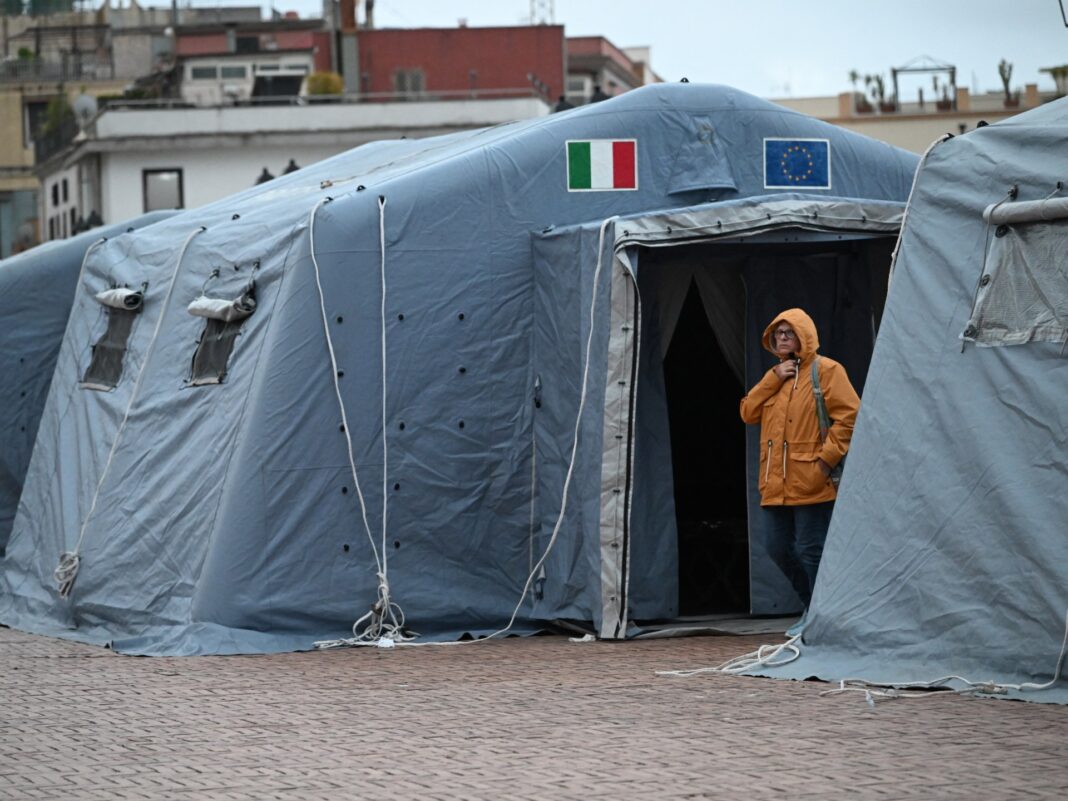The area in southern Italy witnessed a ‘seismic swarm’ overnight in which some 150 quakes were recorded.
Authorities evacuated 39 families near the Italian city of Naples and schools were closed after a wave of earthquake tremors sparked panic but no injuries.
One 4.4-magnitude quake was registered shortly after 8:00pm (18:00 GMT) on Monday evening at a depth of 2.5km (1.6 miles), according to the National Institute of Geophysics and Volcanology (INGV).
It was part of what the institute called a “seismic swarm” overnight in which some 150 quakes were recorded.
“This is the most powerful seismic swarm in the last 40 years,” said the institute’s Mauro Di Vito.
Some residents of Pozzuoli, a city near Naples, rushed out of their homes into the street following the tremors on Monday night, which the local mayor said on Tuesday lunchtime were still ongoing.
Around 80 people slept overnight in a hastily erected shelter in a sports hall, while numerous reception points – including with tents, toilets and temporary cots – were set up for those too scared to go home.
Seismic activity is nothing new in Pozzuoli, located on the Campi Flegrei (Phlegraean Fields), Europe’s largest active caldera – the hollow left after an eruption.
But many of the 500,000 inhabitants living in the danger zone experienced a 4.2-magnitude quake last September.
“We were so scared, even though people are used to it,” an employee of a pizzeria in central Pozzuoli told AFP.
Some residents railed against what they saw as a lack of preventative action by authorities, including checking how buildings might withstand an even bigger shock.
“My shop has never been checked,” said a second hairdresser in Pozzuoli, Nella Aprea, 55.
“Action plans are in place but there are still not enough resources.”
Emergency services reported cracks and pieces falling from buildings after the quakes, and inspections were ordered across a wide range of sites.
Thirty-nine families were evacuated from 13 buildings, the civil protection department said.
Schools in Pozzuoli were also closed for checks, alongside 18 factories, a municipal cemetery and a fish market, according to Pozzuoli’s Mayor Gigi Manzoni.
Some 140 inmates of the city’s women’s prison were transferred to other institutions while damage to the jail was examined.
“How long will the buildings be able to hold out while [there are] all these shocks? That’s what we wonder,” one resident told RAI News television.

Naples Mayor Gaetano Manfredi said on Tuesday that the situation was “under control”, adding there was “no risk of eruption”.
But he warned the situation could continue “for months”.
“It is very important to live with this phenomenon, trying to maintain normality,” he said.
The eruption of Campi Flegrei 40,000 years ago was the most powerful in the Mediterranean.
A resurgence of seismic activity in the early 1980s led to a mass evacuation that reduced Pozzuoli to a ghost town.
Specialists, however, say a full-blown eruption in the near future remains unlikely.
The INGV recalled on Tuesday that in the 1980s there were more than 1,300 seismic events a month and hydrothermal activity caused the ground to lift by 9cm (3.5 inches) a month.
By contrast, around 450 seismic events have been recorded in the last month and the lifting speed remained steady at 2cm (0.8 inches) a month.







